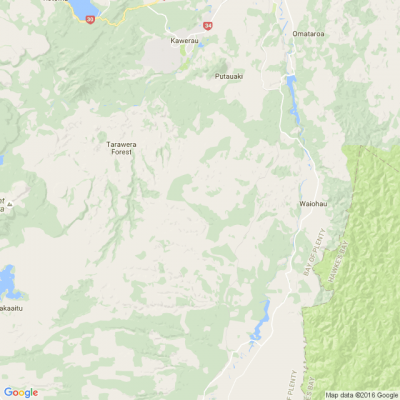
Know what’s happening
Access the private noticeboard for verified neighbours near you. Keep informed about any suspicious activity, send urgent updates to your neighbours when required and discuss emergency planning.
Get to know your neighbours
Browse the directory and start getting to know your neighbours. Don’t want to post to the whole neighbourhood? Send a private message.
Buy, sell and give away
Want to declutter your garage? Buy some used household items? Give away some garden stuff? Become a verified neighbour to browse and post items for sale. Trading is simple when everyone lives nearby.

Have you got your tickets yet?
For just $15, you could win a fully furnished home in Clarks Beach, Auckland worth over $1 million. Buy your tickets today!

Thank you for using Neighbourly
You may receive an email confirmation for any offer you selected. The associated companies will contact you directly to activate your requests.
It's time to unleash the artist within you, showcase your DIY creative skills and spruce up an old item or completely repurpose it! Resene and Neighbourly are challenging everyday Kiwis like YOU to take part in the Resene Upcycling Awards.
We want to see your amazing creations so … View moreIt's time to unleash the artist within you, showcase your DIY creative skills and spruce up an old item or completely repurpose it! Resene and Neighbourly are challenging everyday Kiwis like YOU to take part in the Resene Upcycling Awards.
We want to see your amazing creations so don't be afraid to go all out! Check out some of the previous entires here.
Take part in the 2022 Resene Upcycling Awards. There are four great prizes worth $500 up for grabs: a $200 Resene voucher and a $300 Prezzy® card!
Learn more

Mei Leng Wong Reporter from NZ Gardener & Get Growing
Dear neighbours,
Every month, NZ Gardener runs a series of tested reader recipes using a seasonal crop. We are now on the hunt for yam recipes, so send your best ones to mailbox@nzgardener.co.nz before June 3, 2022.
Every published recipe wins a copy of our special edition Homegrown Recipes.

Bay of Plenty Regional Council
Wallabies are here, destroying native habitat.
Bay of Plenty and Waikato Regional Council's are working together to stop this from happening.
Find out about their wallaby control programme and why wallabies are a pest here.
You can help stop the spread of wallabies by reporting any … View moreWallabies are here, destroying native habitat.
Bay of Plenty and Waikato Regional Council's are working together to stop this from happening.
Find out about their wallaby control programme and why wallabies are a pest here.
You can help stop the spread of wallabies by reporting any sightings at reportwallabies.com.
Know more

Mei Leng Wong Reporter from NZ Gardener & Get Growing
The hunt is officially on for New Zealand's best collection of houseplants
. Which means you could be 2022 Houseplant Hero. There’s some great prizes to be won! To enter, tell us in writing (no more than 500 words) what potted plants you have, the time you put into caring for them, and what … View moreThe hunt is officially on for New Zealand's best collection of houseplants
. Which means you could be 2022 Houseplant Hero. There’s some great prizes to be won! To enter, tell us in writing (no more than 500 words) what potted plants you have, the time you put into caring for them, and what you love about them. Send us up to five photos of your indoor plant displays. Email mailbox@nzgardener.co.nz. Meanwhile, here's last year's winner Alyce Read, from Nelson.

Robert Anderson from Curtain Clean at Whakatane ChemDry
We have a soft spot for sheep. For many, sheep are symbolic to New Zealand culture with the rearing of sheep being the backbone of the economy for many years.
Sheep farming was established in New Zealand by the 1850s and for several decades wool accounted for more than one third of New … View moreWe have a soft spot for sheep. For many, sheep are symbolic to New Zealand culture with the rearing of sheep being the backbone of the economy for many years.
Sheep farming was established in New Zealand by the 1850s and for several decades wool accounted for more than one third of New Zealand’s exports by value, with the sheep population peaking at just over 70 million in 1982.
This number is significant when compared to New Zealand’s human population of 5 million. By 2020 sheep numbers dropped to 26 million following a decline in profitability compared to other types of farming, particularly dairy.
While also farmed as a food source, today’s article focuses on sheep wool and its environmental attributes.
Wool is a natural and renewable resource and as long as our beloved sheep are eating our tasty green pastures they will always produce wool. Wool has amazing properties that make it ideal for many applications from home furnishings to underwear.
Cotton and synthetic fibres are currently the most commonly produced fibres globally, however, their performance and environmental benefits do not compare to wool.
From Wool to Yarn
The wool clip (the total yield of wool shorn during one season from the sheep) is sent to the scourers where it is cleaned and dried before being spun into yarn. The yarn is then sent to the textile manufacturer where many different processes are involved.
The yarn is wound onto dye cones to be dyed the required colours. Next the yarn is warped onto beams which are threaded through the loom, allowing the weft yarn to run across the warp and create a woven fabric.
The fabric is then inspected, washed, and dried. Very few chemicals are used in the processing, typically only water and heat.
Keep reading: www.curtainclean.co.nz...

Robert Anderson from Curtain Clean at Whakatane ChemDry
Aren't you tired of sky-high winter power bills? Start with your windows to stop the cold from getting in.
BRANZ, an independent research organisation, says:
• 42% to 45% of heat in houses insulated to Pre-2007 requirements is lost through windows.
• If your home has been built or … View moreAren't you tired of sky-high winter power bills? Start with your windows to stop the cold from getting in.
BRANZ, an independent research organisation, says:
• 42% to 45% of heat in houses insulated to Pre-2007 requirements is lost through windows.
• If your home has been built or renovated under the 2007 Building Code, which requires double glazing, you still lose up to 31% of heat through windows.
• Properly fitted curtains and blinds can cut heat loss through single glazed windows by 60% and double glazed windows by 40-50%.
Choosing the right window treatments will help insulate windows and prevent heat loss. Here are three options to answer your "how can I warm up my home?" this winter.
Honeycomb Blinds
Honeycomb blinds are one of the most energy-efficient window treatments. They are also known as honeycomb or cellular shades. These window coverings feature a honeycomb structure to make an air pocket between the window glass and the room that acts as an insulator, blocking heat and keeping the cold out.
When a heater is running, Honeycomb blinds reduce heat loss through windows by up to 60%, which equals around 10% savings on your heating energy. In hotter months, honeycomb blinds reduce unwanted heat from the sun through windows by up to 60% when installed with a tight fit. They are available in different layering options, including single and double-cell.
Heavy curtains or drapes
Drapes or curtains are another way to insulate your home by adding one extra barrier against the cold winter air. The main difference is that curtains are sized to fit the window, and drapes reach the floor.
Keep reading: www.curtainclean.co.nz...
The new range of Line7 performance workwear has been designed, developed and tested by you – New Zealand farmers. We asked, listened, and collaborated directly with farmers in the making of this gear. We tested and re-tested in on-farm environments. We re-engineered what farming workwear can be … View moreThe new range of Line7 performance workwear has been designed, developed and tested by you – New Zealand farmers. We asked, listened, and collaborated directly with farmers in the making of this gear. We tested and re-tested in on-farm environments. We re-engineered what farming workwear can be with your needs front of mind.
We brought our decades of experience creating world-class performance gear. Add to that a legacy of Kiwi innovation, a challenger spirit and a practical attitude that’s been part of Line 7 since we started back in 1963.
Every detail has been reviewed and refined – without overlooking the obvious. Breathable, flexible, functional and comfortable, while still being supremely durable and waterproof. Made to fit farmers of all shapes and sizes, with a dedicated range for women. Built to last, and last a bit longer still, with an included repair kit that means you can fix it up quickly yourself.
Now take it out there, try it on and put it to the test. Wear it out and wear it again. We’re pretty damn confident you won’t be disappointed
Find out more

While farming has changed significantly through the generations, LIC has had the privilege of journeying alongside farmers, their families and their businesses and have made constant improvements to deliver superior genetics and technology in response.
Visit our website to find out more about … View moreWhile farming has changed significantly through the generations, LIC has had the privilege of journeying alongside farmers, their families and their businesses and have made constant improvements to deliver superior genetics and technology in response.
Visit our website to find out more about how these advances are getting the next generation interested in dairy farming.
Find out more

The Team from NZ Compare
NZ Compare is the home of easy and free to use comparison sites. We’re passionate about helping Kiwis compare what’s out there, so we wanted to introduce you to a new member of our brand family – PriceMe!
PriceMe is NZ's largest comparison-shopping site, sounds fun right?! Whether … View moreNZ Compare is the home of easy and free to use comparison sites. We’re passionate about helping Kiwis compare what’s out there, so we wanted to introduce you to a new member of our brand family – PriceMe!
PriceMe is NZ's largest comparison-shopping site, sounds fun right?! Whether you're buying electronics, appliances, smartphones or watches, hair straighteners or any other everyday household or office product – find the best prices on PriceMe.
Make it your first stop, not an afterthought Neighbours!
Plus, you don’t need to leave the house! Shopping made simple, just how we like it.
Visit us

Robert Anderson from Curtain Clean at Whakatane ChemDry
Do you feel like there is too much light in your bedroom at night or in the morning? Too much light in your bedroom could be severely interfering with your sleep. Here’s how blackout curtains can help.
Why does light affect your sleep?
Light is one of the key signals for your circadian … View moreDo you feel like there is too much light in your bedroom at night or in the morning? Too much light in your bedroom could be severely interfering with your sleep. Here’s how blackout curtains can help.
Why does light affect your sleep?
Light is one of the key signals for your circadian rhythm. Your circadian rhythm is essentially your master ‘body clock’ that takes its cues from your general sleeping patterns, light exposure and temperature. This body clock starts facilitating the release of the sleep hormone melatonin about 2 hours before ‘bedtime’.
So, reducing your exposure to light at night time may help signal to your body that it’s time for bed and help you achieve a deeper sleep. This means you should be avoiding exposure to sunlight, reducing your screen time, and dimming the lights or lamps in your bedroom. Unless you live deeply rural, you will also need to find ways to reduce light from cars, streetlights and other homes entering your bedroom. That’s where blackout curtains come in.
What are blackout curtains?
Blackout curtain or lining fabric is made from dense, tightly woven materials that do not allow light through. Because the material is dense, blackout fabrics also have great insulation and noise-cancelling properties.
How blackout curtains help you get a better night’s sleep
When installed correctly, blackout curtains (or blackout curtain lining) almost completely stop external light entering your bedroom, and so contribute to an environment that allows a deeper sleep. They need to full cover the window frame for the blackout effect to work properly, so light doesn’t come through the sides. Blackout fabrics will also help reduce your energy bill and make it easier for you to control the temperature in your bedroom – another crucial factor for your circadian rhythm.
Blackout curtains will drastically improve sleep for night shift workers
If your job or lifestyle mean you need to get your rest during daylight hours, blackout curtains are a fantastic way to reduce light exposure and ‘trick’ your circadian rhythm into producing melatonin.
If you would like to add a blackout lining to your current curtains or book your curtains or blinds in for a maintenance clean, contact the team at Curtain Clean on 0800 579 0501.

The Team from NZ Compare
Business is tough and finding the right broadband plan or provider can be just as rough, so let's make it a little easier.
We want you to focus on achieving your strategy, not going from site to site, call to call to get a good deal! So we've launched Business Compare - a simple, free … View moreBusiness is tough and finding the right broadband plan or provider can be just as rough, so let's make it a little easier.
We want you to focus on achieving your strategy, not going from site to site, call to call to get a good deal! So we've launched Business Compare - a simple, free to use website that will help you compare NZ broadband retailers that supply businesses just like yours!
NZ Compare is here to help Kiwi businesses find the right plan, the right provider, the right fit. Go visit Business Compare now!

Te Whare Wananga o Awanuiarangi
2022 Courses
Rukuhia te mātauranga – pursue knowledge with courses at Te Whare Wānanga o Awanuiārangi.
Choose from a wide variety of subjects and programmes, ranging from certificates and undergraduate degrees to Master and Doctorate level. With subjects including, sciences, humanities,… View more2022 Courses
Rukuhia te mātauranga – pursue knowledge with courses at Te Whare Wānanga o Awanuiārangi.
Choose from a wide variety of subjects and programmes, ranging from certificates and undergraduate degrees to Master and Doctorate level. With subjects including, sciences, humanities, mātauranga Māori, te reo Māori, indigenous studies, marae centred learning and much more! With delivery available at multiple sites and some with online delivery we invite you to find out more.
It isn’t too late to enrol! Contact us now
Find out more

The Team from Neighbourly.co.nz
We are incredibly proud to launch Short Notice is a new initiative designed to connect neighbours with a little spare time on their hands with local businesses that need a bit of extra help!
It's very simple; using the new Short Notice community hub, share a little about yourself, your … View moreWe are incredibly proud to launch Short Notice is a new initiative designed to connect neighbours with a little spare time on their hands with local businesses that need a bit of extra help!
It's very simple; using the new Short Notice community hub, share a little about yourself, your availability and how you'd like to help.
If you're a business owner sign up for a FREE Premium Business listing to get access to Short Notice and let your community know what help you need.
Together, let's help keep small businesses busy!
Explore Short Notice

Grab yourself a delicious Barista Made Coffee for only $4 at McCafé.
McCafé, simply good coffee.
Available for a limited time.
Find out more

Robert Anderson from Curtain Clean at Whakatane ChemDry
Here are some simple ways to be warmer this winter.
Keeping your home cosy need not break the bank. Here are our top 10 frugal tips for keeping warm this winter:
1. Wonder where all your heat’s going? Light a candle and trace around your window edges, doors and vents – but make sure your … View moreHere are some simple ways to be warmer this winter.
Keeping your home cosy need not break the bank. Here are our top 10 frugal tips for keeping warm this winter:
1. Wonder where all your heat’s going? Light a candle and trace around your window edges, doors and vents – but make sure your curtains are out of the way. When the smoke starts going sideways you’ve found a draught. Window sealant tape is a cheap way to keep in the heat.
2. Don’t neglect the timer on your heat pump. Set it to come on at about 20 degrees an hour before you come home. You’ll make considerable savings compared to blasting it at 23 degrees all evening.
3. If your electric heater lacks a timer, you can buy a plug-in timer from as little as $10 from most hardware stores – they look like power adapters but have a digital interface allowing you to set appliances to come on up to seven days in advance.
4. Ensure your curtains and blinds fit snugly against the window frame. We’ve found this is more important than the material they’re made from. Floor-length curtains are better than sill-length curtains, which aren’t much better than no curtains at all.
5. Our testing found fan-less heaters (like oil-column models) often result in uneven, layered heat distribution. To avoid cold feet and a hot head, place a small desktop fan on the ground beside the heater. We found it helped an oil-column heater warm a room 3 times as fast.
6. Double-glazing doesn’t need to cost the earth. In fact, you can pick up DIY window insulator kits for under $15 per frame. All you need to do is cut the film to size and use a hair dryer to shrink it onto the window.
7. If you’re not worried about aesthetics, there’s an even cheaper way to stop heat escaping through your windows. Bubble wrap is a great temporary option, especially on internal windows in seldom-used areas. Secure it to the pane using Blu-Tack or double-sided tape, and make sure it sits flush against the frame.
8. Cat flaps are a major source of draughts. To improve the seal around the frame, unscrew the whole assembly, clean the area where it’s in contact with the door, then screw it back in tightly. Then add a thin line of silicone sealant around the frame. If draughts persist, stick some light rubber insulation tape on both sides of the flap.
9. A rug is a great way to add another layer of insulation, especially if you’ve got wooden or concrete floors. Putting down a thick rug in living areas will help prevent heat loss through the floor, especially if there’s no underfloor insulation.
10. Use pot lids when cooking. This can reduce the amount of moisture released into the air by three litres per day.

 Loading…
Loading…
Are you sure? Deleting this message permanently removes it from the Neighbourly website.
 Loading…
Loading…

 $359,000
$359,000



 Marketed by Michelle Stephenson
Marketed by Michelle Stephenson

 $560,000
$560,000



 Marketed by Michelle Stephenson
Marketed by Michelle Stephenson

 $639,000
$639,000



 Marketed by Michelle Stephenson
Marketed by Michelle Stephenson

 Auction
Auction



 Marketed by Michelle Stephenson
Marketed by Michelle Stephenson

 Auction
Auction

 Marketed by Michelle Stephenson
Marketed by Michelle Stephenson

 Tender
Tender


 Marketed by Jami Botha
Marketed by Jami Botha

 $399,000
$399,000


 Marketed by Matt Stephenson
Marketed by Matt Stephenson
© Neighbourly 2024
